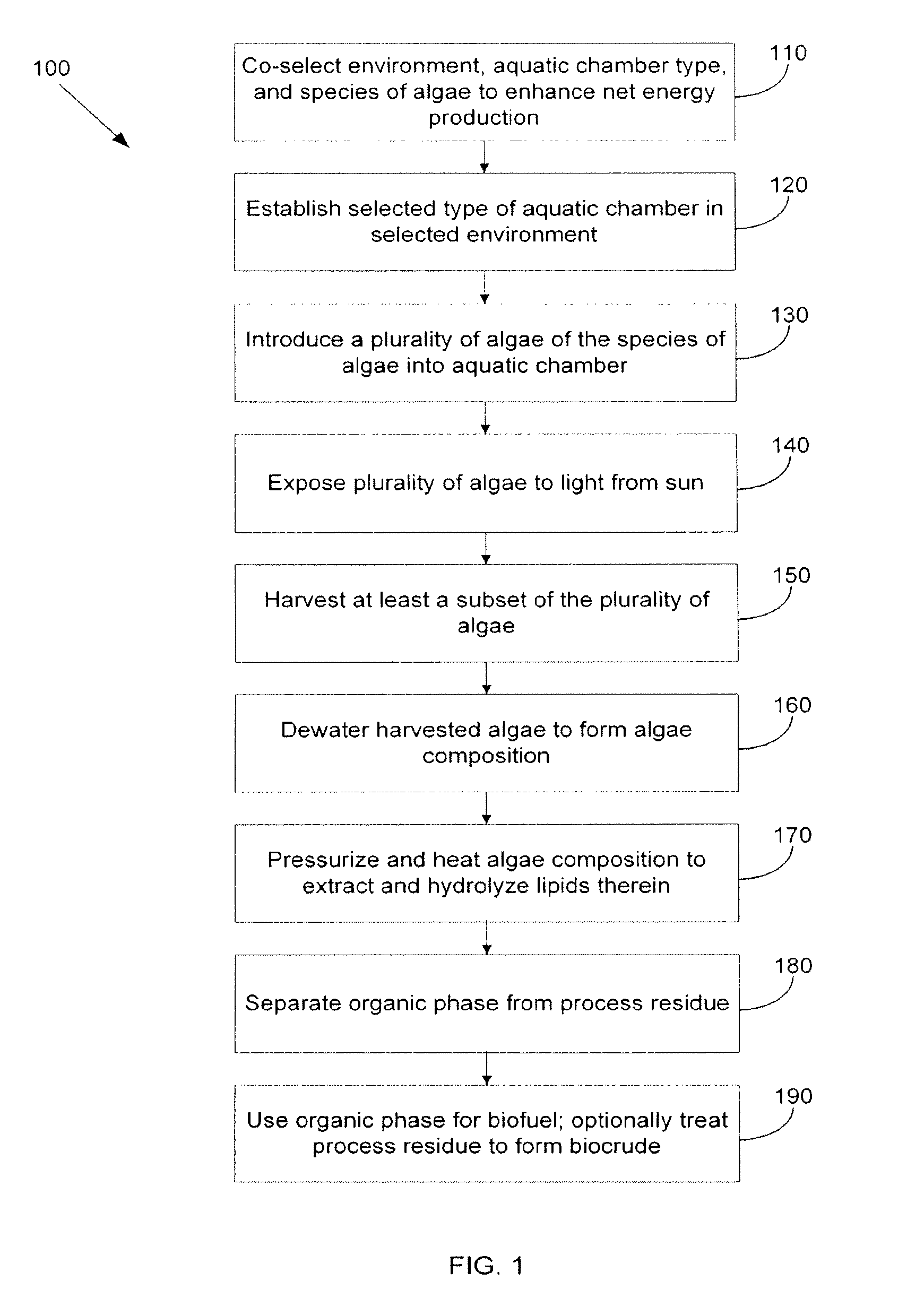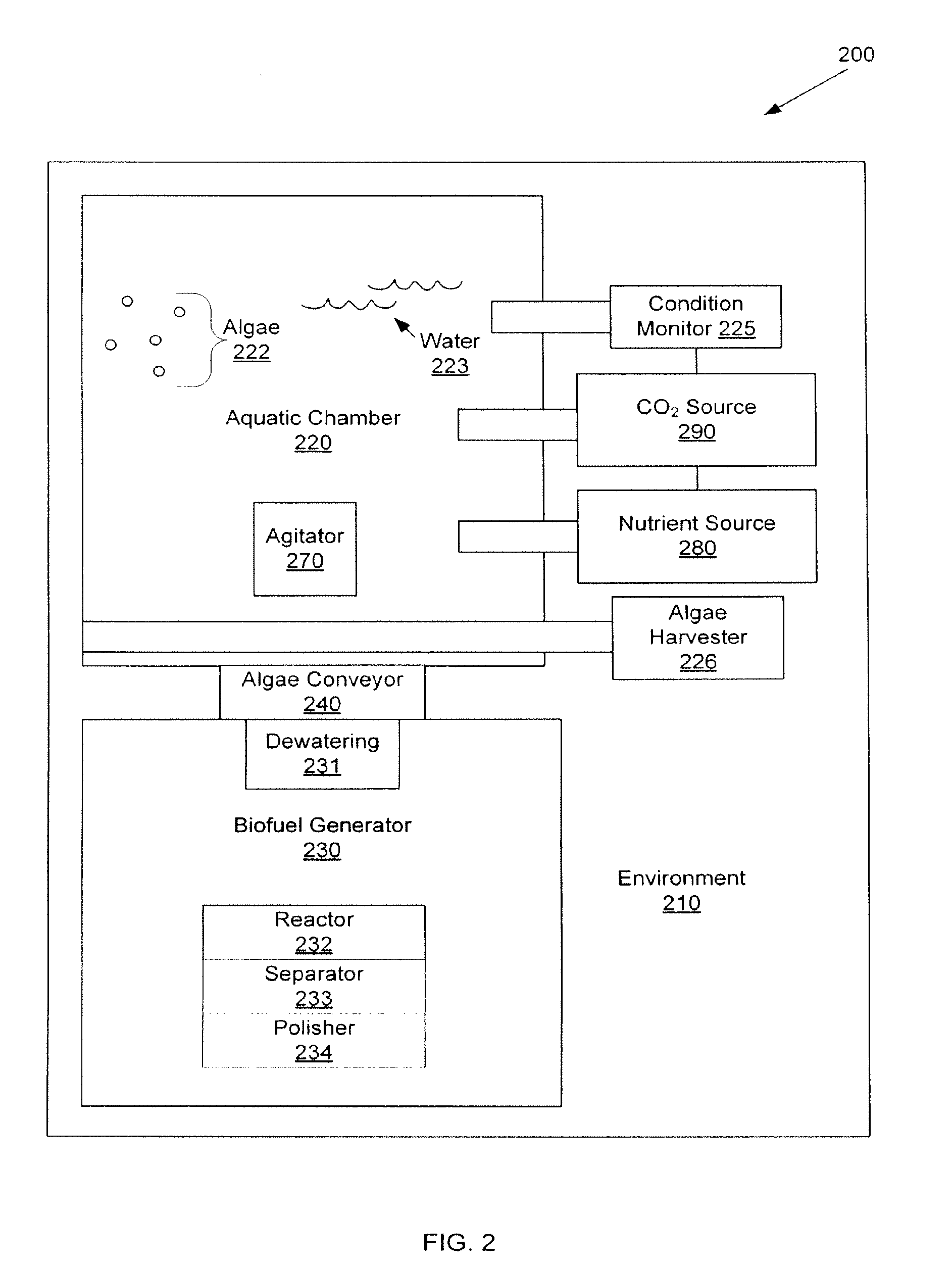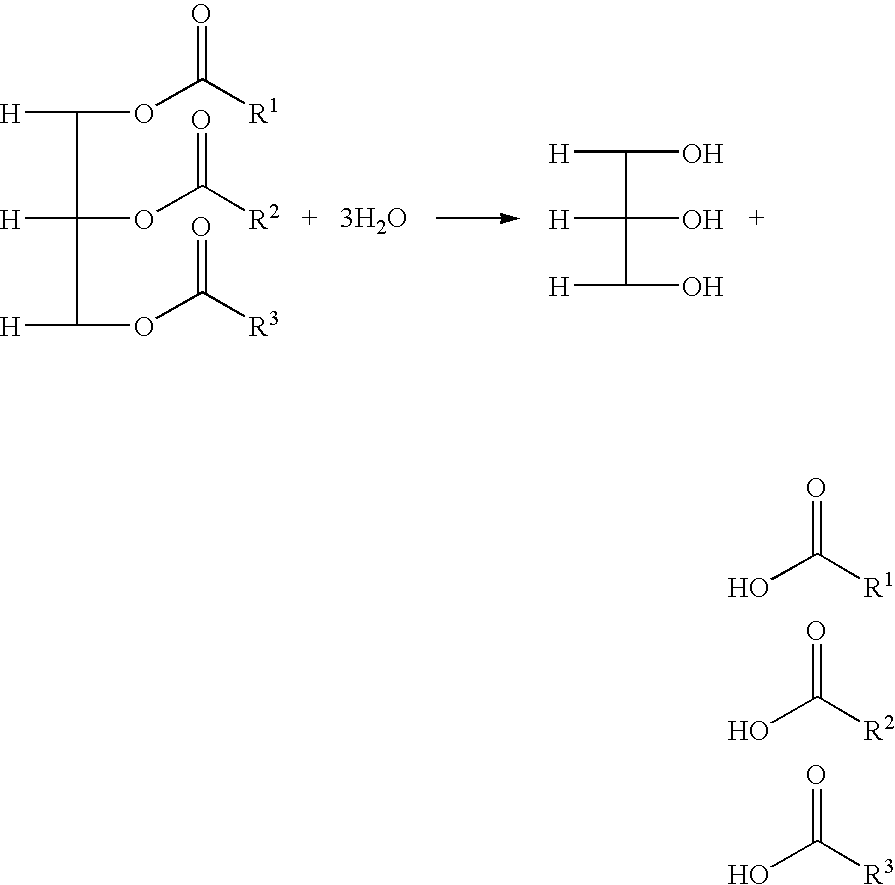Systems and methods for hydrothermal conversion of algae into biofuel
a technology of hydrothermal conversion and biofuel, which is applied in the direction of fuels, biomass after-treatment, bulk chemical production, etc., can solve the problems of limiting the growth of the biodiesel industry and not being able to develop affordable feedstocks for biodiesel
- Summary
- Abstract
- Description
- Claims
- Application Information
AI Technical Summary
Problems solved by technology
Method used
Image
Examples
Embodiment Construction
[0008]The invention provides systems and methods for hydrothermal conversion of algae into biofuel by the use of near-critical or supercritical water which increase the net amount of useful energy obtainable from algae. To produce biodiesel from algae, the algae are first harvested from an open pond at a concentration of about 0.2 g / L in water. The algae are then sequentially dewatered in several steps typically concluding with centrifugation, which produces an algal paste of about 15% solids. Conventionally, the paste is then fully dried by evaporation. Oil is then extracted from the dried algae with an organic solvent such as hexane, which is then evaporated to leave the residual algal oil, or triglycerides. The term “about,” as used herein, unless otherwise indicated, refers to a value that is no more than 20% above or below the value being modified by the term.
[0009]However, such a conventional method for producing biodiesel from algae can be prohibitively expensive. First, the ...
PUM
 Login to View More
Login to View More Abstract
Description
Claims
Application Information
 Login to View More
Login to View More - R&D
- Intellectual Property
- Life Sciences
- Materials
- Tech Scout
- Unparalleled Data Quality
- Higher Quality Content
- 60% Fewer Hallucinations
Browse by: Latest US Patents, China's latest patents, Technical Efficacy Thesaurus, Application Domain, Technology Topic, Popular Technical Reports.
© 2025 PatSnap. All rights reserved.Legal|Privacy policy|Modern Slavery Act Transparency Statement|Sitemap|About US| Contact US: help@patsnap.com



